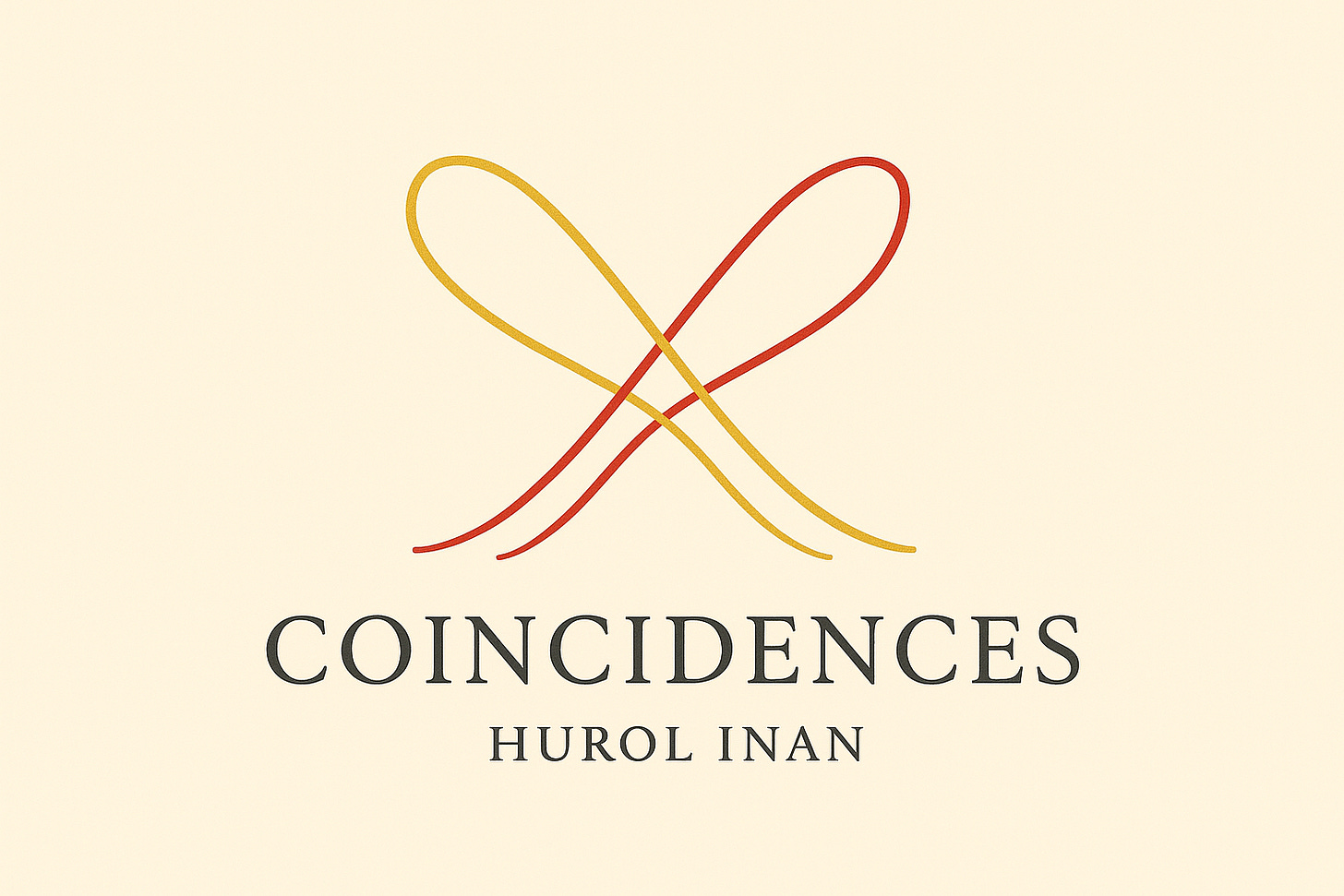Preface
“My life is a series of coincidences that have shaped and transformed it.”
That was the realisation I came to during an informal conversation on a terrace in Barcelona. I was with two newly made friends, sharing stories as a way of softening the anonymity of a new city.
Speaking aloud, I began listing events—moments when an unplanned encounter opened unexpected doors and changed the course of my life in profound and positive ways. I remember pulling out my phone and jotting down the thought then and there.
At the time, I had just finished writing my book Tall Person. Good Height. But I realised I’d left something out: these stories of chance and transformation. I felt compelled to write them down—not just to remember them, but to shape them into a new book.
I started by recounting key moments and people that influenced the direction of my life. These stories had a professional bent but always spilled over into the personal—altering where I lived, how I saw the world, even my financial circumstances. Like:
Getting my first job in another city, in a field I didn’t even know existed
Moving to another country and earning a degree
Writing a book that led to launching a business
Selling and exiting that business
Transitioning into a new professional path
As I wrote, I began to notice a pattern: people were at the heart of these moments. Many I met through chance—at a restaurant counter, a paddle court, or a beach. These encounters became friendships, relationships, opportunities. Our lives are deeply interconnected, and coincidences often hinge on those connections.
I also noticed that certain themes recurred—common threads, parallel structures—despite different people, places, and outcomes. I began calling these patterns “metadata.”
This discovery deepened my curiosity. I started asking questions like:
Are coincidences real, or just stories we construct in hindsight?
Do they happen to everyone?
How do we notice them—and what makes some stand out?
Can we invite or even create coincidences?
These questions sent me down a research path. I began reading what others had written—how science, philosophy, and spirituality try to explain coincidences. I found that this subject has long fascinated thinkers from many disciplines: psychology, theology, mathematics, neuroscience, and more.
I enjoy learning—and sharing. As I explored, I told friends about what I was working on. I started calling it a “writing project” or a “book-in-progress.” The response was overwhelming. Everyone had a story. Everyone was intrigued. Many remembered reading about synchronicity or serendipity. I was surprised how many knew about Carl Jung, who coined the term synchronicity. I’m deeply grateful for their encouragement.
Synchronicity and serendipity dominate the literature on coincidences. This book includes some of what I’ve learned about both. But the stories I’m drawn to are more grounded, more human. They go something like:
“A missed train led to meeting someone who changed my life.”
Scientific frameworks like probability and chaos theory offer compelling explanations for such events. My own mind, shaped by evidence-based reasoning, gravitates toward them. But these frameworks often felt incomplete.
That led me to explore how we perceive the world. Our brains are meaning-making machines. We’re wired to find patterns, to seek coherence in complexity. In that light, storytelling is not just a form of expression—it’s a response to the randomness of life. That’s why we see coincidences as meaningful. That’s why we feel the need to share them.
I believe this is an area ripe for further research. With growing interest and investment in neuroscience, I hope we’ll soon understand more about what happens within us when a coincidence strikes.
If science can explain how something happens, neuroscience may help us understand how it feels.
There is also a long tradition of interpreting coincidences through a spiritual lens. Across cultures—from monotheistic religions to Eastern philosophies—many see coincidences as divine signs or cosmic alignments. This book includes a brief look at those perspectives as well.
At its heart, this book is a personal and intellectual pursuit to understand coincidences. I see myself not as an expert, but as a curator—gathering stories, exploring ideas, connecting dots. I have stories of my own. I seek explanations. And I want to shed light on a phenomenon that so many of us quietly experience but rarely explore together.
This is an invitation to reflect, to share, and to join a conversation that’s been waiting to happen.



Looking forward to reading them